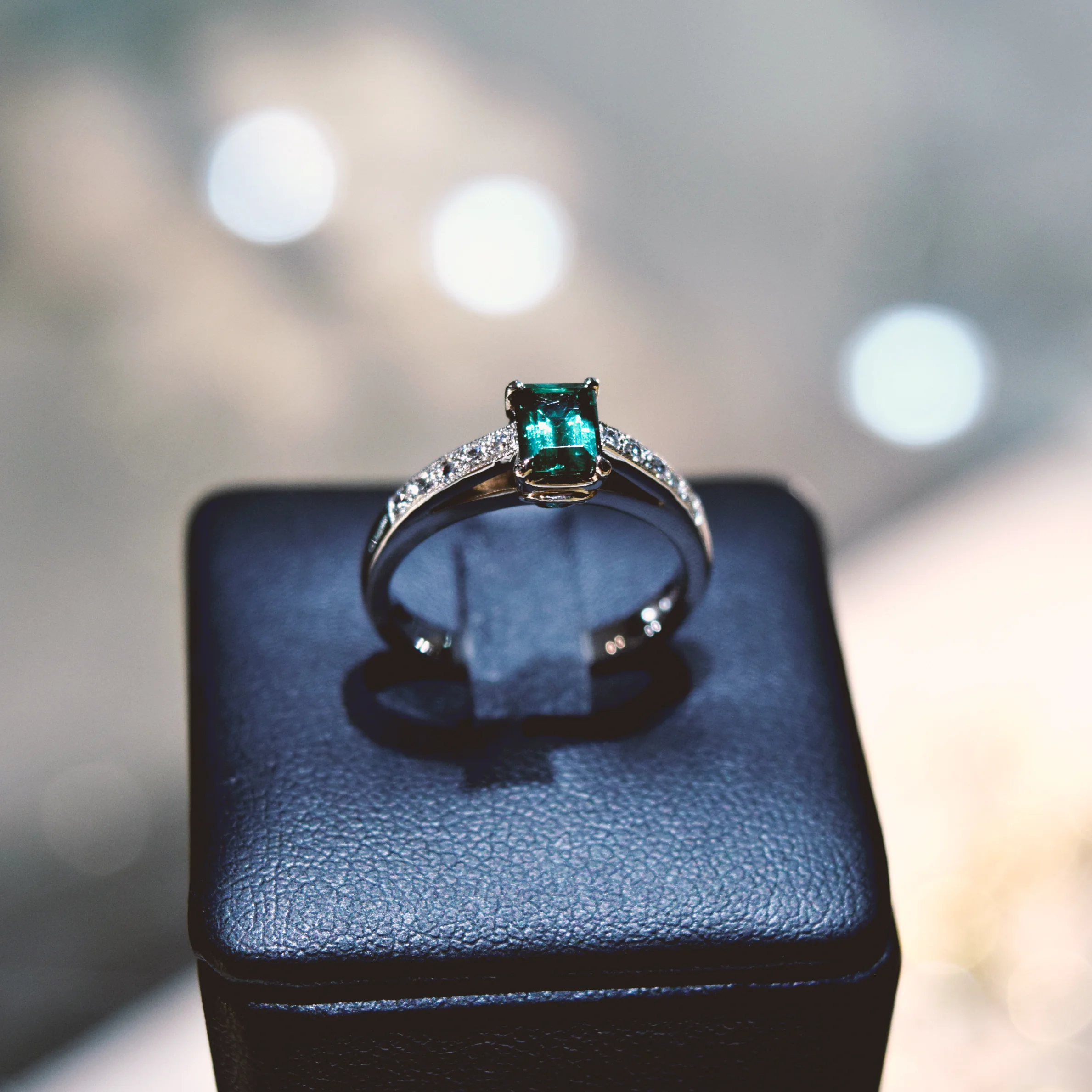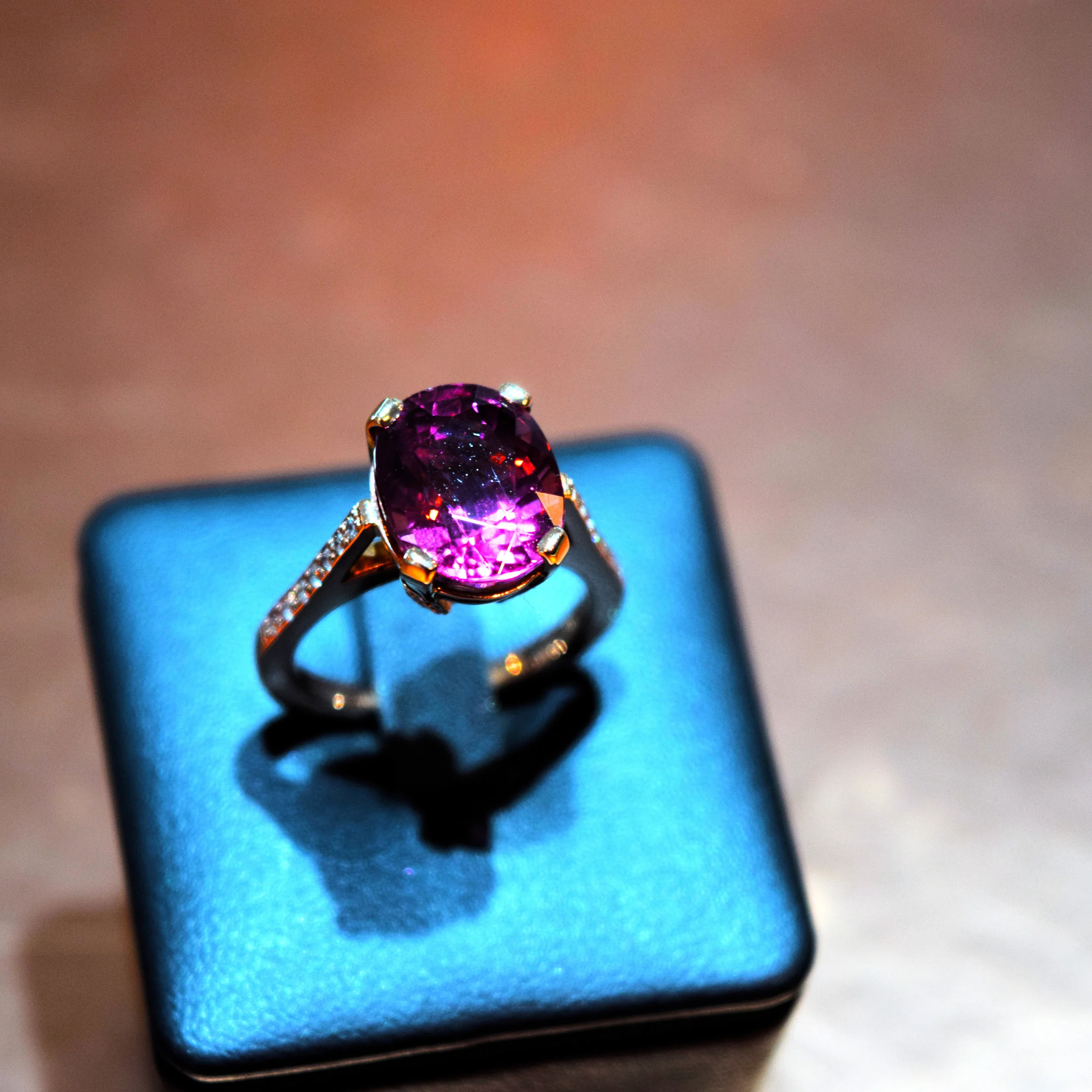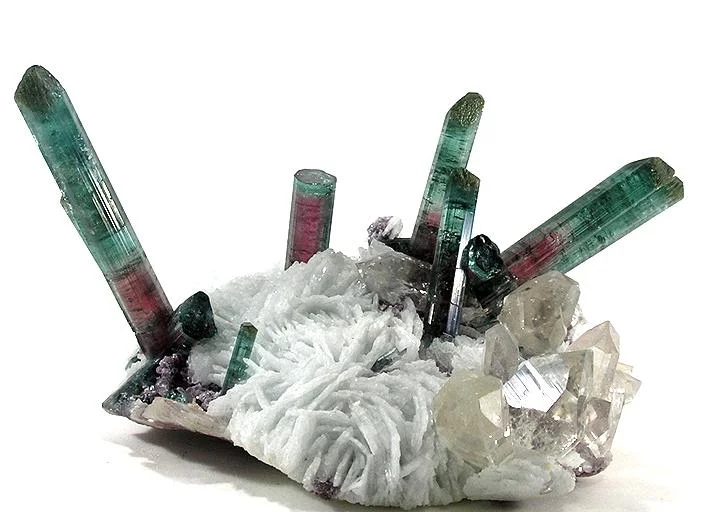Tourmaline
The tourmaline family of minerals feature a variety of fabulous colours with the same basic crystal structure, occasionally with multiple colours within the same stone. It’s considered a gemstone of the moderns times due to both its durability and adaptability into a plethora of styles.
The gems where first introduced to the western world in 1703 when Dutch trading companies began to import them from Sri Lanka, granting the name tourmali meaning ‘mixed colours.’ From soft pastels to intense neon’s, the tourmaline can be anything from the centre of attention to a stunning addition, a fact which has lead to the prices of tourmalines to triple over the last few years.
The colours found in individual tourmalines is decided by the impurities present. Similarly, a few of these gemstones can be dichroic to varying degrees, allowing different colours or shades to be seen depending on the viewing angle. Common inclusions include cracks running parallel to each other and thorn-like fluid inclusions. As a result, many tourmalines are faceted into step-cuts or scissor cuts to display it at its best.
indicolite
Indicolite includes tourmalines of all shades of blue, from the striking blue of a sapphire to a bright blue-green turquoise colour. Much blue tourmaline tends to be rather dark, so as a result indicolite is often heat treated to lighten it.
rubellite
The rubellite is one of the most desirable and valuable stones within the tourmaline family. Meaning quite literally red, true rubellite should feature an intense hot pink to red with violet to blue tones underneath, with none of the muddying yellow or brown tones. It’s a breath-taking alternative to the ruby.
verdelite
Verdelite is the green branch of the tourmaline family tree, featuring hues such as emerald green, bright leaf green and chrome green. These are the most sought after colours, and equally the hardest to find. It’s rare to come across a clean, green tourmaline over five carats. Similarly the bright yellow and citric tourmalines are neither stumbled across often.
bi- and tricolour tourmalines
Multiple tourmalines consist not of one, but of two, three or more colours with the best known combination being the watermelon tourmaline combining a bright pink and a soft green. There are many variations of colour combinations available, and to show off the contrast best the cutters usually utilise a set-cut octagon or a baguette cut.
Sources:
Judith Crowe, The Jeweller's Directory of Gemstones (London: A&C Black, 2006)
Cally Hall, Gemstones (London: Dorling Kindersley, 1994)
Jaroslaw Bauer and Vladimir Bouska, A Guide in Colour to Precious & Semiprecious Stones (London: Octopus Books, 1983)


